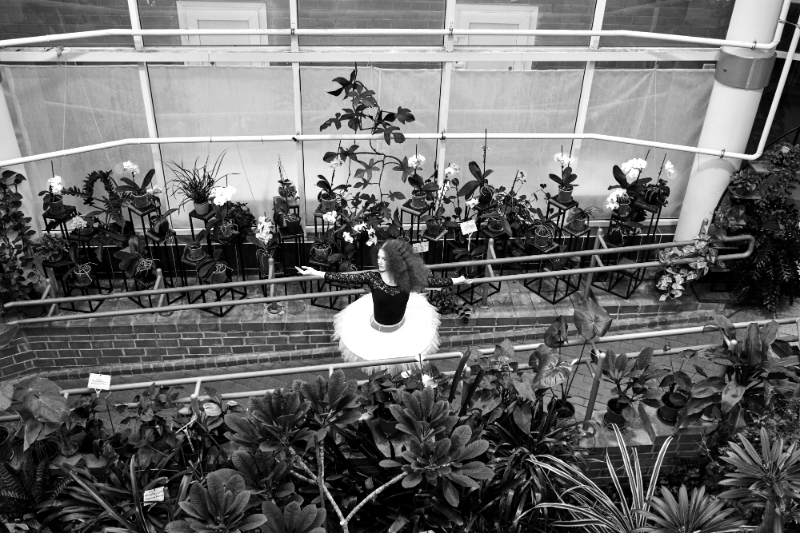Imagine walking into a place filled with lush greenery and beautiful flowers, a place where you can see the sunlight passing gently through the leaves. As these amazing views surround you, a deep sensation of peace pours over you, leaving you completely refreshed and at ease. This is not just a scene from some surreal movie; it might be your life, even in the heart of the city.
Living in a city has advantages, but the continuous hustle and concrete dullness can leave you looking for a touch of nature. It is hard to enjoy peace when surrounded by tall buildings and ongoing noise. But even in a small space, what if there was a way to bring a little piece of heaven to your door? Enter the concept of sensory gardens for urban dwellers.
Don’t let limited space stop you. This article explores sensory garden ideas and teaches you to balance your senses, from soothing smells to calm textures. So, put down the headphones and the continuous scrolling; it’s time to reconnect with nature in a way that is as unique as you are.
Basics of sensory gardens
Sensory gardens are specifically designed landscapes that engage all five senses. sight, smell, sound, touch, and even taste (with edible plants!).
Adding elements that engage all the senses leads to a rich and complete experience. Unlike usual gardens that might focus only on looks or productivity, sensory gardens seek to engage the senses to promote relaxation, mental focus, and emotional well-being. Sensory gardens have the following key features.
- Sight. Bright colors and various plant textures that enchant the sight.
- Smell. Fragrant plants and herbs offer olfactory experiences.
- Sound. Elements such as rustling foliage, water fountains, or wind chimes offer relaxing audio backgrounds.
- Touch. Soft, textured flora and tactile surfaces are inviting to touch.
- Taste. Edible plants and herbs that can be gathered and consumed.
These unique features make sensory gardens ideal for city settings, where natural sensory experiences are often limited.
Read more: Exploring the Link Between Physical Recreation and Mental Well-Being
Benefits of sensory gardens
Sensory gardens are restorative and carefully designed spaces that activate all senses, creating a unique and engaging experience. While building such a garden requires a lot of time, effort, and creative thinking, but the benefits can be great. So, is it worth the investment? Absolutely. Here are some benefits of sensory gardening in a community or personal surroundings.
Reduced stress
Among the most known advantages of sensory gardens is their ability to reduce stress. These gardens’ soothing sights, sounds, and smells can reduce stress levels, promoting relaxation and mental well-being. Imagine walking out onto your apartment balcony, where the slow drip of a water feature and the soothing aroma of lavender present a peaceful escape from the rush of daily life.
Read more: The Stress Detox: Reclaiming Well-Being in a Hectic World
This design style is more than simply looking beautiful; it can also function as a therapeutic escape, improving your emotional condition.
Furthermore, including sensory gardens in your daily routine might have a big impact on how you manage stress. Plant care may be extremely calming, whether in a modest backyard or a roof garden design. Focusing on sensory experiences, such as the flavor of fresh herbs, allows you to practice mindfulness while being grounded in the present moment and away from daily problems.
The sensory connection that urban gardening creates is essential in the cityscape, where green spaces are few and stress levels are often high.
Read more: Maximizing Urban Garden Organization In High-Density Living
Improved mood
Nature has been shown to positively affect mood, and sensory gardens are a great example of how connecting with beautiful colors, fragrant flowers, and quiet noises can boost your spirits. When you build a sensory garden, you incorporate items that engage the five senses (sight, smell, sound, touch, and taste) into your urban environment. This not only transforms your surroundings but also creates a lively atmosphere that is helpful to happiness.
For example, seeing lively flowers on your front landscape design can be welcoming. Plants such as marigolds, petunias, and snapdragons give vibrant color to even the smallest apartment balcony, front yard, or extra space.
Enhanced sensory awareness
Sensory gardens allow you to experience the world more mindfully. By focusing on the sights, sounds, textures, and scents that surround you, you can strengthen your connection to the present. This increased sensory awareness is especially useful in modern city life, where the fast pace can easily dull our senses.
Read more: Reaching a Higher Sense of Self Through Mindfulness
This technique allows you to appreciate minor details and improves your overall sensory experience. Garden design for small gardens, such as container gardening or hanging gardens, can be customized to provide rich sensory experiences while using limited areas best.
Planning your urban sensory garden
Now that you’re excited about the possibilities, let’s get your hands dirty (literally!) Here’s a step-by-step guide to planning your very own urban sensory garden.
Assessing your space
Begin by measuring the available space for your sensory garden. Whether you have a little backyard, a balcony, or a rooftop, understanding the measurements and qualities of your space will help you make design decisions.
- Small backyard. Create distinct sensory zones using a variety of plants and objects.
- Urban balcony. Hang and grow plants vertically to make the most of your area.
- Rooftop. Check for roof strength and use container gardening to avoid damage.
Read more: Benefits of Having a Balcony During and Post-Pandemic
Choosing plants and elements
This is where the fun begins! You can pick plants and decorations that are pleasing to your senses, transforming your home into a personal paradise. Look at the vivid colors, different styles, and pleasant scents that will spread throughout your garden. Each plant and piece you choose adds a unique touch, creating a balanced and welcoming environment. Dive in, explore the options, and create your ideal garden getaway.
- Sight. Flowers in bright colors such as red, orange, and purple will enhance visual attention. Plants with different textures, such as airy ferns and green begonias, provide a visually appealing atmosphere.
- Smell. Aromatic herbs such as lavender, rosemary, and mint can fill your garden with calming scents. Scented flowers such as roses, jasmine, and hyacinths provide an extra layer of fragrance.
- Sound. Plants with rustling leaves, like bamboo or ornamental grasses swaying in the breeze, can produce soothing sounds. You can also add a tiny water feature for the soothing sound of flowing water.
- Touch. Plants with unique textures, such as lamb’s ear (soft and fuzzy) and artistic grasses (tough and feathery), allow for tactile exploration.
- Taste (optional). If your space allows, consider using edible herbs and fruits to add a flavor layer to your sensory garden.
Incorporating design techniques for small spaces
Creative and strategic planning methods are important when designing for small spaces in cities.
The limited nature of city surroundings requires creative solutions that make every square foot useful and pleasing to the eye. Even the most limited places may be transformed into welcoming and functional spaces by including smart design features and using space-saving measures. Here are different practical solutions for making the most of tiny city surroundings.
- Vertical gardening. Use vines, wall planters, and elevated plans to cultivate climbing plants while conserving ground space.
- Container gardening. Use a variety of containers to make a portable and multipurpose garden. Containers can be moved and adjusted to meet your needs.
- Layering plants. To create thickness and visual interest, arrange plants in layers, taller in the back and shorter in the front.
Incorporating non-plant elements
Get ready to boost your gardening experience by adding non-organic elements! While plants give life and color, non-organic items improve your sensory experience. When carefully chosen and strategically arranged, these accessories can transform your garden into a haven of peace and delight. Here are some creative ways to introduce them.
- Water features. A little fountain, birdbath, or even a simple water basin can provide a peaceful sound while attracting wildlife.
- Tactile pathways. Use smooth pebbles, gravel, or wooden planks to construct pathways that encourage discovery and interaction.
- Seating areas. Include comfortable seating to encourage visitors to spend time in the garden, reflect, and enjoy the sensory stimulation.
Additional tips and ideas
But the journey does not stop there. Beyond the basics of plant selection, small-space design techniques, and the use of non-organic elements, one can exercise an endless amount of creativity. Here are additional suggestions and sensory garden ideas to inspire your urban oasis.
- Lighting. Set up solar-powered garden lights to improve the visual appeal and make the space usable at night.
- Mirrors. Well-placed mirrors may make a tiny garden appear larger and provide a sense of surprise.
- Aromatherapy. Use essential oils and scented candles to enhance the olfactory experience.
- Interactive things. Include things such as herb gardens where you may pick leaves to smell or taste, as well as touchable water features.
In conclusion
Creating an urban sensory garden transforms your living area into a private haven that improves overall health.
It is not just adding more greenery. Sensory gardens engage all five senses, offering a place to escape from the stresses of modern life as well as a space for mindfulness and meditation.
A sensory garden can transform your living space, whether you want to improve your mental and physical health, establish a community place, or simply take in nature’s beauty. With these strategies and approaches, even the smallest places in cities may be converted into lush, sensory-rich havens. Now is a great time to start your sensory garden project.
If you would like to see more resources on well-being in living spaces, check out the Wellbeing Science Labs. The lab uses the research of the Institute for Life Management Science to produce courses, certifications, podcasts, videos, and other tools. Visit the Wellbeing Science Labs today.
Photo by Freepik




